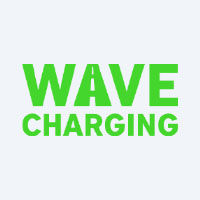WAVE Charging Company Description
WAVE Charging: 500 kW Wireless EV Charging for Heavy-Duty Fleets
If your EV charging strategy still involves fumbling with cables, WAVE Charging is here to flip the script. Born in Salt Lake City and now backed by Ideanomics, WAVE (Wireless Advanced Vehicle Electrification) has carved a serious niche in high-powered, inductive EV charging for buses, port tractors, and Class 8 rigs. Its wireless pads deliver up to 500 kW—yes, 500—with zero plug-ins and no driver action required. It’s the type of clean mobility magic that lets a Kenworth or BYD yard truck get juiced up in under 15 minutes during a standard stop.
500 kW EV Charger: A Powerhouse for Heavy-Duty Electric Vehicles
Let’s talk raw numbers. WAVE’s inductive charging systems transfer energy via magnetic resonance at power levels ranging from 125 to a beefy 500 kW. In a late 2024 test with Cummins and the U.S. Department of Energy, the system proved it could match diesel refueling cycles, giving commercial EVs a legitimate shot at parity. Static charging pads placed in depots, ports, or transit stops can blast energy at lightning speed. For dynamic charging—think buses pausing at red lights—the 70-100 kW range keeps batteries topped off without long delays. Efficiency stays in the 90-92% zone, rivaling wired Level 2 systems, minus the mess.
Commercial EV Wireless Charger Built for Fleet Uptime
AVTA’s all-electric bus fleet in California, powered by WAVE, crossed 5 million zero-emission miles by 2021—and that was just the beginning. In Seattle, Sound Transit’s deployment in 2024 brought 300 kW hands-free charging to double-deckers, adding 3 miles of range per minute. Meanwhile, Indiana’s test run with Venture Logistics proved WAVE could keep freight trucks running long shifts with minimal downtime. For operators who measure success in uptime and total cost of ownership, WAVE’s inductive tech is a godsend. Smaller batteries, less weight, lower maintenance, and zero cables cluttering the shop floor.
Charging as a Service with WAVE Energy Cloud Software
WAVE’s tech is just one part of the equation. Its Energy Cloud software ensures smart load balancing and real-time scheduling, keeping your power draw clean and your grid bill manageable. Charging as a Service (CaaS) adds another layer of appeal—no upfront capital needed. Instead of shelling out six figures for hardware, operators pay monthly or per charge, making it easier for logistics firms and transit agencies to electrify without budget paralysis. Integrations with Kenworth and BYD show WAVE’s not just a plug-and-play solution—it’s OEM-friendly and future-focused.
Fleet Electrification Solutions with Real-World Proof
WAVE’s hardware is built for punishment—outdoor pads that endure snow, mud, and tire scrapes without flinching. From Tel Aviv’s 200 wireless-ready buses to Detroit’s public EV road, the tech is proving itself in varied environments. Fleet operators report 32% uptime boosts, thanks to mid-route charging that trims idle time. Still, the system isn’t perfect: $500,000+ per install is no pocket change, and retrofitting vehicles with receivers costs another $5,000 to $10,000 each. Yet for large fleets, the ROI comes fast—especially when uptime, maintenance, and emissions costs are factored in.
Heavy-Duty Wireless EV Charging vs. Plug-In and Dynamic Rivals
WAVE’s 500 kW static system tops InductEV’s 450 kW and holds its own against Electreon’s dynamic road tech. It’s not built for consumers—that’s WiTricity’s wheelhouse—but it dominates the fleet space. For now, dynamic charging doesn’t hit fast-charger levels on highways, and OEM standardization is still a hurdle. But when you’ve got federal agencies, Toyota, and Cummins in your corner, it’s hard not to bet on WAVE. If your fleet runs on tight schedules and tighter margins, this tech might be the missing link in your EV game plan.
View all Products Produced by "WAVE Charging"
(where we publish the EV description and EV specs for each model)



